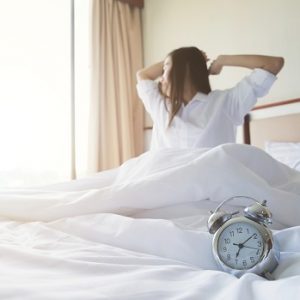
More evidence that low-calorie sweeteners are bad for your health
Studies show that artificial sweeteners can raise the risk of hypertension, metabolic syndrome, type 2 diabetes and heart disease, including stroke.

October is a dismal time of year. The clocks go back, which accelerates the onset of darker evenings and the “shorter days” inevitably lead to calls for the tradition of putting clocks forward or backward to stop.
Of course, the annual return to Greenwich Mean Time (GMT) from British Summer Time (BST) doesn’t make the days any shorter, it merely shifts an hour of available daylight from the evening to the morning. For many, lighter evenings are a priority and little attention is given to the benefits of lighter mornings. Arguments over clock changes tend to revolve around benefits for easier travel in lighter evenings. Nevertheless research suggests that holding onto lighter mornings might have hitherto unforeseen advantages. Light in the morning – more than any other time of day – leads to powerful brain-boosting effects, helping us to function as best we can, despite the approaching winter.
All life on Earth has evolved around the 24-hour cycle of light and dark. An obvious sign is our desire for night-time sleep, but most biological functions are fine-tuned around day and night. Our bodies are honed to environmental light via a biological chain reaction.
Chain reactions
» Daylight savings clock changes is a topic that divides people for all kinds of reasons.
» Research shows that there may be benefits for health that go beyond simply the ‘feel good factor’ of lighter evenings for the workforce.
» Better and more light in the mornings may help optimise morning cortisol secretion, which in turn, can help those with with seasonal affective disorder (SAD).
Light intensity is detected by special cells in the retina and this information is relayed to the internal body clock, located deep in a part of the brain called the suprachiasmatic nucleus. This sits in the hypothalamus, responsible for regulation of internal body processes using the endocrine system, which is linked to hormone secretion, via the pituitary gland. We are unaware of these light messages as they have nothing to do with conscious vision. Their sole job is to internalise information about environmental light intensity.
The biological chain reaction continues with the brain driving the secretion of the hormone cortisol appropriate for the time of day – low levels in the dark and higher levels in the light. Cortisol is a powerful hormone with widespread effects on the brain and body. It is well known as “the stress hormone” but it is this underlying 24-hour pattern that keeps us healthy.
Better for the brain
A robust burst in cortisol secretion occurs in the first 30 minutes after waking up. This is called the cortisol awakening response (CAR), and crucially this CAR is bigger when we wake up with light. So lighter mornings increase the CAR which in turn promotes better brain function so that we can tackle the day ahead.
We have previously shown that people most badly affected by the changing seasons (those with seasonal affective disorder, or SAD) had lower CARs when waking up in the dark winter months. This was compared to a group of people not affected by changing seasons in winter as well as themselves in summer.
Furthermore, those reporting greater seasonal depression, stress, anxiety and lower arousal exhibited the lowest winter CARs. However, winter awakening with the aid of an artificial light (dawn simulation) was able to restore the CAR. This finding is consistent with light exposure, especially morning light, being the most effective treatment for the winter blues.
More recent research has explored what the CAR does in more detail, as part of healthy cortisol secretion. A bigger burst of cortisol in the morning (the CAR) has been linked with better brain plasticity (the capacity to learn) and function – especially better goal-setting, decision-making and planning (what we call the executive function). Indeed the decline in the CAR with ageing has been associated with worse executive function.
A daily tipping point
Morning awakening is a striking and important biological event – the tipping point of the day. A rapid burst of cortisol secretion kickstarts the day by synchronising widespread biological systems. This powerful hormone rapidly sweeps throughout the body where it is recognised by receptors on all body cells. These receptors generate the next stage in the biological chain reaction to ensure we are appropriately prepared and energised for the challenges of the day ahead. Smaller CARs mean we do not function optimally.
So on dark winter mornings it can be more difficult to mount a robust burst of cortisol in the morning. This is because both awakening and light are the stimuli for this crucial tipping point of the day. A lack of light in the morning can diminish the biological chain reaction and make many of us feel below par and not function at full throttle. Ironically this would be most marked for those that are in any way affected by the seasons. So those who complain most about the dark days are probably the most likely to benefit from light in the morning, rather than the evening.

Please subscribe me to your newsletter mailing list. I have read the
privacy statement